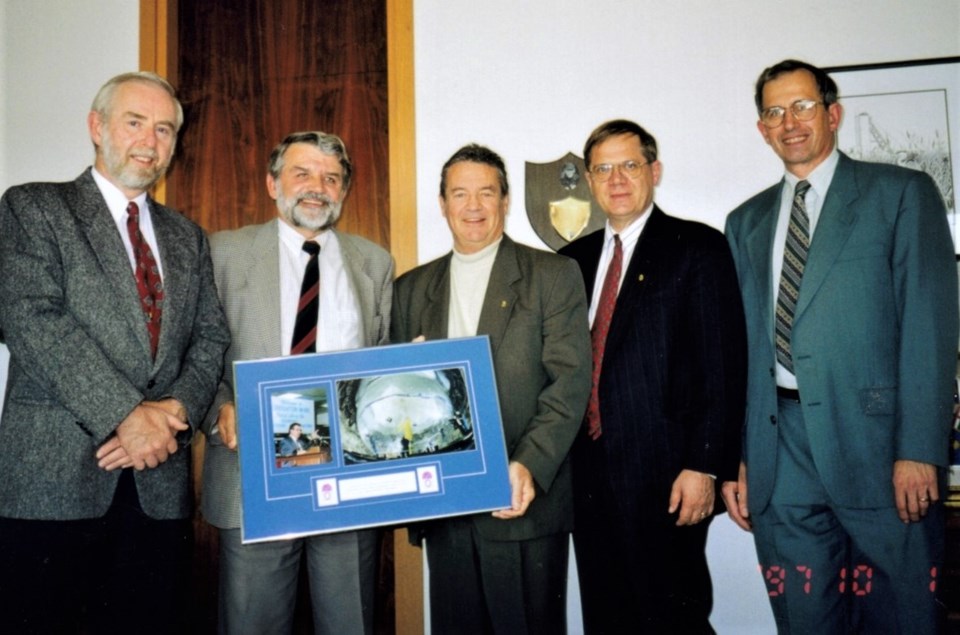Editor’s note: Laurentian University’s undergraduate physics and master’s in physics programs were among the programs cut by the university last month as part of its insolvency restructuring.
In 1985, as Chair of the Department of Physics at Laurentian University, I met with a group looking for the best deep underground site for a particle physics experiment and our department was invited to join in the planning process.
A location 2,000 meters underground in Sudbury's Creighton Mine was selected and it is still the very best in the world.
I felt that if a large international physics laboratory was to be located in our community, Laurentian should seize this opportunity for unique research opportunities for our faculty and graduate students. We joined in mine site exploration and the preparation of a proposal for the Sudbury Neutrino Observatory (SNO) featuring a unique heavy water neutrino detector.
With the strong support of INCO, Regional Council Chair Tom Davies, city councils and area members of parliament, the requests for funding SNO to granting agencies in Canada, the United States and Great Britain, were approved in 1990. Laurentian became a founding partner of the Sudbury Neutrino Observatory (SNO) Institute which managed the project through Director Art McDonald.
Laurentian physicists and graduate students had significant roles in the building of the detector and laboratory and in its operation and data analysis from 1998 to 2006. SNO's measurements of solar neutrinos (tiny fundamental particles emitted from our Sun) with this unique detector, found neutrinos missing from earlier measurements by other labs - solving the existing Solar Neutrino Problem. The results received widespread acclaim and SNO publications were cited in a record number of research papers for several years.
Our Particle Astrophysics research group grew over the years, as external grants provided support for postdoctoral researchers, graduate students and laboratory equipment. Our research activities and grants significantly increased Laurentian's position in the nationwide university research funding rankings and additional overhead funds, paid to the university, have been very beneficial to Laurentian.
We were all delighted when the Nobel Prize in Physics for 2015 was awarded to director Art McDonald for SNO's discoveries and I was honoured to travel to Stockholm as the representative of the Laurentian SNO team and SNO laboratory staff to participate in the awards ceremony.
Laurentian is also a founding partner in SNOLAB, an expansion of the underground laboratory to include room for additional experiments. SNOLAB gives new opportunities for involvement of our faculty and students as new experiments were built and operated. Our faculty members have key roles in these developments and SNOLAB scientists have enriched our program as adjunct professors. Graduates of our program have gone on to a variety of research and teaching positions in particle physics and Laurentian has a significant presence in the field.
Currently, several Laurentian colleagues and I participate in the SNO+ experiment - helping to modify the original SNO detector to incorporate new sensing materials and techniques. Measurements now beginning have great potential for discovering new properties of neutrinos. SNOLAB has a very bright future.
I strongly urge the university to seek ways in which Laurentian's strong particle astrophysics research and graduate training program can be continued at our local world-class SNOLAB facility.
Doug Hallman
Professor Emeritus - Physics
Laurentian University
